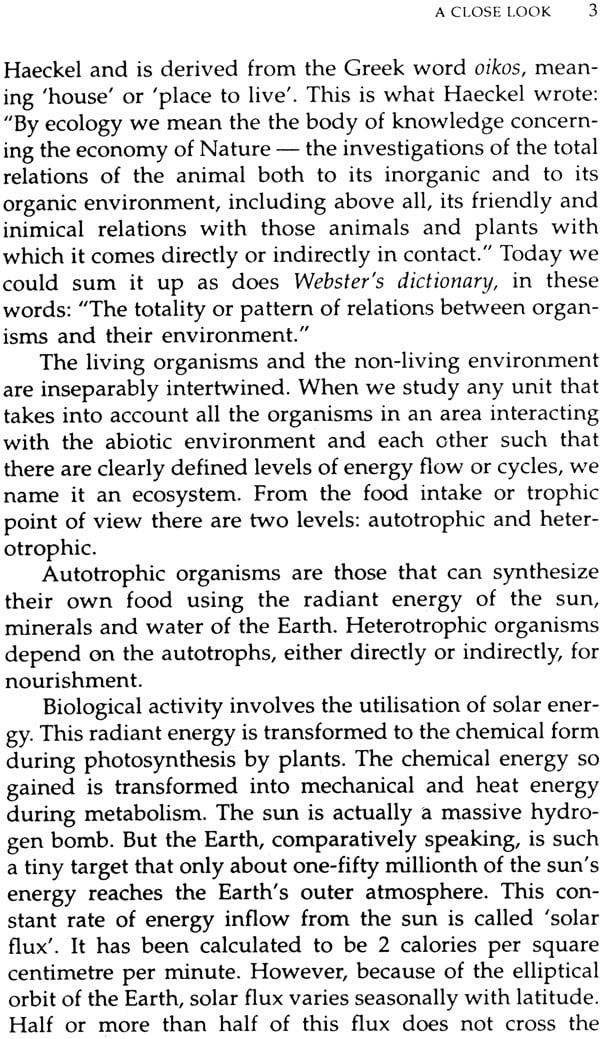
Social Life of Plants
Book Specification
| Item Code: | NAD439 |
| Author: | Sukanya Datta |
| Publisher: | National Book Trust, India |
| Language: | English |
| Edition: | 2010 |
| ISBN: | 9788123729381 |
| Pages: | 104 |
| Cover: | Paperback |
| Other Details | 8.5 inch X 5.5 inch |
| Weight | 150 gm |
Book Description
Sociability is not a word easily associated with plants. However, these first citizens of Earth are amazing life forms with powers to surprise us if only we care enough to shed our prejudices. Plants form alliances, maybe even friendships, with other plants and with animals too. They wage war against enemies, using chemicals to delineate territory which they defend ferociously. They employ mercenaries they use subtle strategies for survival, recruiting agents to suit their purpose. Secrets of plant life as uncovered by modern science reveal that plants lead lives far from being silently mundane. The word ‘extraordinary/ would sum it up rather more aptly. This book offers a startling new perspective on the world of plants, presenting an atypical point of view that ignites a sense of wonder as it explores the plant world.
Dr. Sukanya Datta did her doctorate in zoology from the University of Calcutta before joining the Council for Scientific & Industrial Research (CSIR) as a Scientist. She has had a long stint as Associate Editor with Science Reporter. Dr. Datta has authored ten books and co-authored twelve others including an Encyclopedia of Science & Technology.
As someone trained in zoology it would perhaps have even more in order had I written ‘Social Life of Animals’ instead of the book you are now holding in your hands. Sometimes serendipity plays a role and the germ of an idea LS thrown up in the course of a meeting or a conversation. The idea sprouts and a book is born. This is exactly what happened in this case.
This book owes its genesis to Shri Arvind Kumar, former Director of NBT to whom I owe a debt of gratitude. Ms Manju Gupta, my long-suffering editor deserves special thanks for her patience and relentless follow-up. Shri Biman Basu was kind enough to wade through the first draft despite his busy schedule; my thanks are due to him too.
To the artists and also the production staff at NBT my most grateful thanks.
When Sir J.C. Bose experimentally proved that plants are sensitive and respond to external stimuli as well, the effects I Western mind were revealing. One gets some idea from Aldus Leonard Huxley’s book, Jesting Pilate, wherein he as described his experience of a visit to Bose Institute, Calcutta to see for himself “the great experimenter” (i.e. JC. Bose). He himself was their guide and “followed him from marvel to marvel”— the marvel being the experirnents of plant’s response and behavior towards certain stimuli. On seeing the experimental demonstration of the agony of a poisoned and dying plant, Huxley wrote: “The last moments are so distressing like those of a man that we were shocked by the newly revealed spectacle of them, into a hitherto unfelt sympathy.” Such sentiments have been expressed by many others. Indeed, J.C. Bose in his book, Abyakta (The Mute) passionately described the subtle and intricate nature of many plants’ life and behavior with such great understanding that Rabindranath Tagore acclaimed it as a unique achievement.
It is heartening to see that in the Social Life of Plants the author has once again chosen the basic nature of a plant’s life and its interactions, using sociality as the major organizing theme. This is an encouraging approach, narrated in a reader-friendly style and with emphasis on explaining a concept rather than cataloguing facts. At the same time the reader learns not only about the hitherto unknown plant’s behavior and nature, but also how scientists pursue knowledge.
Life is basic. In its truest form and meaning, plants and animals have the same principles that govern the life process, notwithstanding the surface difference in its manifestation. Social Life of Plants once again proves that we need to look differently at plants, accepting them as our family members and not as distant cousins!
| 1 | Acknowledgements | ix |
| 2 | Foreword | xi |
| 3 | A Close Look | 1 |
| 4 | For Generations to Come | 20 |
| 5 | Spreading Far and Wide | 38 |
| Bizarre Associations | 48 | |
| War and Peace | 67 | |
| Bibliography | 89 | |
| Index | 91 |













